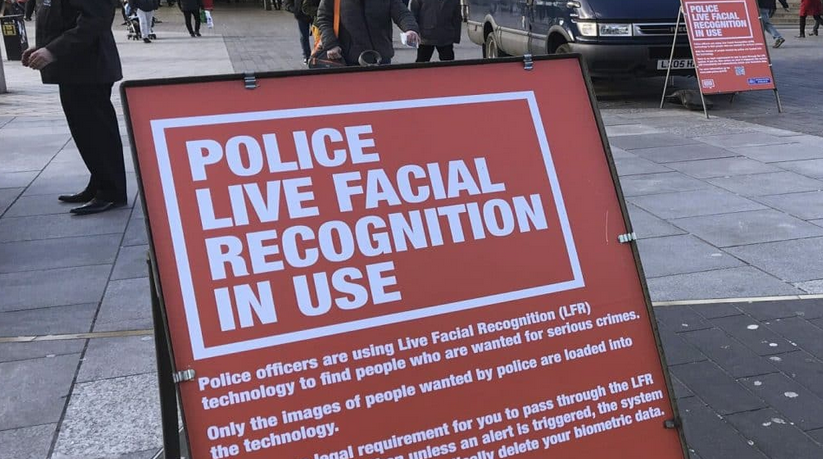 By Masha Borak
By Masha Borak
Police in the UK have been ramping up the use of facial recognition technology with plans for further rollouts in 2024, sparking alarm among civil society groups and lawmakers. This week, the UK Parliament’s Justice and Home Affairs Committee probed police deployment of live facial recognition (LFR) technology in England and South Wales.
One one side, representatives from police forces and biometric algorithm supplier NEC argued that facial recognition can help catch criminals and find victims while keeping privacy invasions to a minimum. On the other side of the debate, legal experts questioned its legality and warned about the ramifications of its misuse.
“We have a benchmark, where we determine the necessity and proportionality of the use of the technology,” says Mark Travis, senior responsible officer for facial recognition technology at South Wales Police. “We apply a serious threshold. And the decision to deploy the equipment is made by an officer of the rank of Assistant Chief Constable or above.”
Facial recognition has also faced repeated criticism over allegations of bias and false positives. In April, the UK National Physical Laboratory (NPL) published test results for the live facial recognition system supplied by NEC to the London Metropolitan Police, with policing officials concluding that the system can resume deployment.
During Tuesday’s session, the police maintained that technology is getting better at handling false positives, citing last year’s figures from the South Wales Police which showed scans of over 819,000 faces with zero errors.
“We’re on our third algorithm update from the provider at the moment, and certainly the number of false alerts has gone right down,” says Lindsey Chiswick, director of intelligence at the Metropolitan Police Service. “We’ve had two false alerts. That’s well below what the National Physical Laboratory put forward as what to expect. It’s extraordinarily accurate.”
Activist Post is Google-Free — We Need Your Support
Contribute Just $1 Per Month at Patreon or SubscribeStar
The deployment of live facial recognition has also brought questions about its proportionality and lawfulness.
“This is surveillance at scale remotely that is possible across an entire nation in real time,” says Karen Yeung, interdisciplinary professorial fellow in law, ethics and informatics at the Birmingham Law School & School of Computer Science.
“It’s a very powerful technology. The capacity to scale up is readily malleable once the infrastructure is in place,” she says.
Police officials, however, note that the infrastructure still doesn’t allow for all-encompassing surveillance. An important feature of police facial recognition use is the human in the loop: Police officers can receive an alert from the system about a person but the rest of their work will look like regular policing, in that they will approach the person and ask for identification, explains the Met Police’s Chiswick.
“When we look at public surveys we’re seeing between 60 and 80 percent of the public here are actually supportive of law enforcement using the technology,” she adds.
The legal conundrum of live facial recognition
There is still no specific legislation that covers the use of live facial recognition. Instead, police forces such as the Met Police use a legal mandate that relies on the common law as the primary law. Their work is defined by a complex patchwork of regulation from technology deployment and oversight bodies and commissioners, says Chiswick.
Receiving a notification about a match is one thing; turning it into a lawful apprehension, however, may be another legal question, says Yeung.
“The police are really going to struggle in making those lawful and proportionate decisions in specific contexts,” Yeung says. “I think we do need a legislative framework that makes that much more straightforward.”
The Justice and Home Affairs Committee inquiry is part of a wider examination of advanced algorithmic tools in law enforcement in England and Wales. The Tuesday probe is a follow-up on the Committee’s 2022 report, Technology rules? The advent of new technologies in the justice system.
Meanwhile, other legal experts in the UK have also been questioning police deployment of live facial recognition.
In a new paper published in the Modern Law Review, Daragh Murray, senior lecturer at Queen Mary University London School of Law, argues that legal courts should acknowledge the intrusiveness of live facial recognition compared to other police surveillance methods. The law should also establish an explicit statutory basis for the technology.
“Understanding how a surveillance-related chilling effect impacts on human rights protections is complex, and the police use of Real-time Facial Recognition technology presents a challenge unlike any previously addressed by human rights law,” Murray writes.
Source: Biometric Update
Become a Patron!
Or support us at SubscribeStar
Donate cryptocurrency HERE
Subscribe to Activist Post for truth, peace, and freedom news. Follow us on SoMee, Telegram, HIVE, Minds, MeWe, Twitter – X, Gab, and What Really Happened.
Provide, Protect and Profit from what’s coming! Get a free issue of Counter Markets today.

Be the first to comment on "UK Police Use of Facial Recognition Probed by Lawmakers"